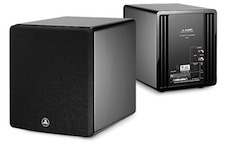It’s the time of year for saving money!
 Five Reasons Not to Use Subwoofers (and why they are wrong)
Five Reasons Not to Use Subwoofers (and why they are wrong)
Reason 1 – Subwoofers take up too much space
You can find lots of smaller footprint subwoofers if you look
for them. The Paradigm MilleniaSub Subwoofer is a fine example of the new
generation of more room-friendly subs that can fit into spaces where
conventionally shaped box subs won’t. Another trick is to use several smaller 8″
or 10″ subwoofers instead of one large one. This buys you more locational
flexibility as well as reducing room resonances caused by a single
low-frequency source.
Reason2 – Subwoofers don’t blend well with mains
With the right subwoofer and correct crossover setting blending
successfully with your mains is a non-issue. Even with “fast” planar
transducers you can find subwoofers, such as the JL Audio F110 and F112, have
the speed and flexibility to meld seamlessly with any speaker made. Crossing over below the THX standard 80 Hz
can make it easier to get a good blend, as can varying the crossover slopes
between the subs and the mains. I often use 60 Hz for my crossover point.
Reason 3 – There’s no music down there (20 – 80 Hz)
While most music is in the midrange, the extreme low end does
deliver that last bit of energy necessary to make music sound real. Sometimes
the sound of a recording venue itself – the ventilation system and the base
noise level, come primarily from the subs. With subwoofers handling the low bass the sonic results sound more open.
Also relieving the main speakers of low bass duties frees up their
amplifiers from reproducing the most difficult and taxing part of the audio
signal. Your system can play louder with less evidence of strain due to crossing
low bass over to the subwoofers. The subs allow a system to gain additional dynamic
contrast capabilities without using to a more powerful amplifier for your main
speakers.
Reason 4 – Subwoofers are hard to hook up right
Most subwoofers have more than one way to attach them to your
system. You can use line level (via preamp subwoofer outputs or a second pair of
main outs) or speaker level via your amp’s outputs. Using the amp method isn’t
as effective at reducing the strain from low bass because the amp must receive
a full-frequency signal for the subwoofer to glom onto. I only use this method
if there’s no way to get a full-frequency line-level signal, such as with the Wadia 151.
Given the myriad of choices for crossover points and slopes
it’s easy to hook up a subwoofer incorrectly, but if you use your ears, and SPL
meter, and a test tone disc, it’s not all that hard to get your subwoofer
hooked up correctly. Some new subs, such as the Velodyne DD+ series, come with
their own built-in expert system set-up programs to make the set-up as easy and
accurate as possible regardless of your own technical comfort level.
Reason 5 – A subwoofer will bother your neighbors
If you live in an apartment of condo a subwoofer set directly
on the floor can upset your downstairs and next-door neighbors. But there’s a
simple solution for this. Merely put your subwoofer on an isolation platform.
This can be as low-tech as a piece of high-density closed cell foam, or a
tweaky as a tuned magnetic or air bladder support system. I use foam, often filched
from the shipping carton the subwoofer came in.





